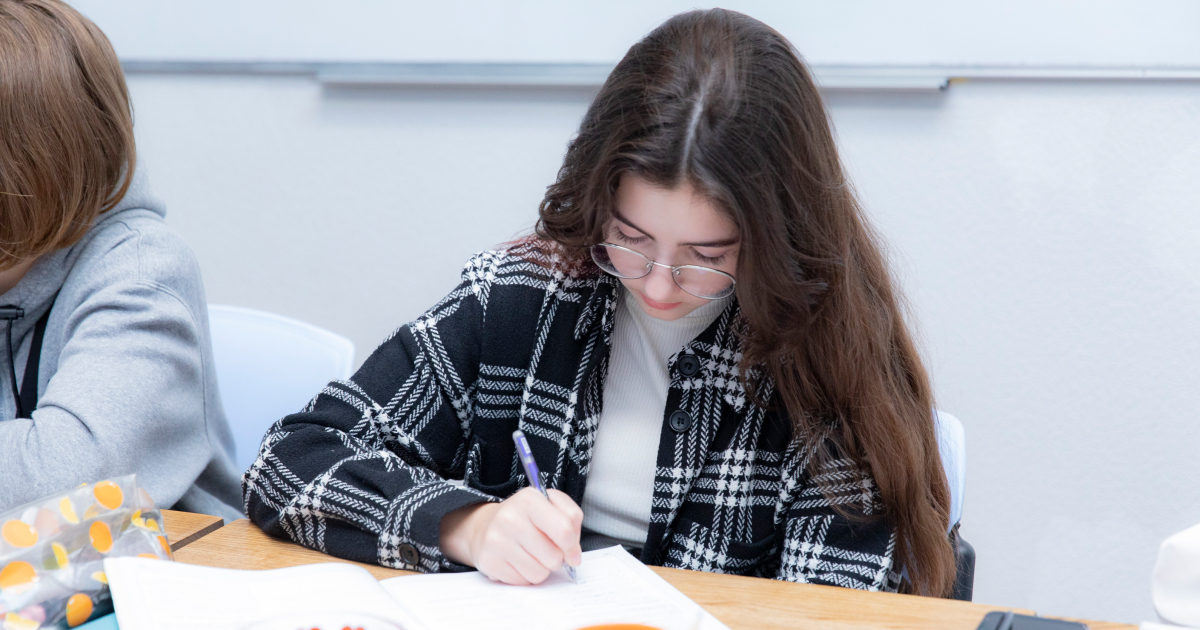What to drill at higher levels
- Speaking
- Pronunciation
- Tips & Strategies

12.02.2025
Teaching English is complex, and it includes various aspects and skills that we need to introduce to our students.
And if you ask an ESL teacher what is their favourite thing to teach the most answers will contain an important system such as “vocabulary”.
There are lots of pleasant things you can create and do as an educator. There is a debate about what is more important: grammar or vocabulary?
There is no answer to that but effective teaching of the systems is a key in building language fluency, accuracy, and confidence.
Let’s be aware that vocabulary is not only about form-meaning. The teacher must analyze all the units that are going to be presented to students:
Also, it’s a good idea to self-reflect before the vocabulary lesson.
Try to answer the following questions:

Teach English online like an expert
Join our courseOne of the greatest ways to familiarize your students with some vocabulary is to visualize it. A bunch of concepts can be presented using flashcards, drawings, photos, and much more.
This is the easiest yet quite memorable way to teach lots of vocabulary: food, drinks, animals, housing, appearance and many-many more to add to this list. They are also known as concrete concepts.
Before presenting new words elicit what your students already know. Let’s say, a new topic is food.
Show students the picture with different products and ask them to name everything they know. If you turn it into competition — it’ll energize your learners.
They can discuss what they see in the pairs (not for long, though).
There is a modification that can be used: you can bring realia and ask your students to guess the products by only touching/smelling/tasting them.
Multisensory learning is not only fun, but it will make the brain remember and retain more.
So, the teacher sees what the students are aware of. The next stage is to show pictures or drawings with the target words. The words themselves can be attached to the image or audio can be played.
Ask the student to look and repeat after you or the audio. To memo more, every time you point to a picture hide the words.
If realia is included — ask students to touch and then pronounce the words.
Students can smell or try the products. Unfortunately, this will only work in face-to-face classrooms.
If you are working online, ask students to find any products at home (if possible).
Use sounds and movements (aka TPR – total physical response) to introduce and drill the new words.
Why is teaching synonyms important?
Example:
When teaching musical instruments, play a recording of the orchestra and ask students to name the musical instruments they can hear.
Then, play each instrument sound separately eliciting the word form. It’s a good idea to use the visuals as well.
It’s also a nice idea to use sounds when you teach animals vocabulary: use the audio with the animals making sounds and get your students to guess which one is this.
Look at some sources for inspiration:
If you are not afraid of experimenting, try to customize your students’ learning experience and create unique pictures or other types of visuals using AI assistants.
The key here is to create a detailed and clear prompt so the AI service can create something that you were meaning to receive.
You need to give AI as many details as you can including background, colors, sizes, and forms.
Check these free AI resources: Microsoft Copilot, PIZLR, Craiyon.

Some concepts can’t be presented visually or using the realia. It means that conveying meaning can be quite challenging for a teacher.
In this case, consider introducing vocabulary using texts or aural material.
Before working with the words themselves, work with the text first:
For example, the topic is adjectives describing emotions and feelings.
A good source of such vocabulary can be comments and short posts from social media. You can pick this material yourself or use AI to help you generate needed text.
First, ask if your students surf social media and comment on any posts. You can also ask what kind of comments people leave under the different posts.
Then tell your students that they are going to look through the comments under some posts.
Ask them to read quickly and think of whether the comments were positive or negative, as well as the reasons behind their conclusions.
As an extension, you can ask them to match with the post where those comments were left.
Elicit the answers where students justify their answers by highlighting specific words or phrases that helped them identify the tone of the comments as positive or negative.
After that ask them to find and underline adjectives. The next step will be conveying the meaning.
For this make a matching or multiple-choice activity with definitions. And put students into small groups or pairs (depending on the number) so they can peer teach and help each other.
After checking it’s time for the magical instrument that makes teaching easier.
Concept-checking questions (also known as CCQs) will help you to see if your students got the ideas and which areas need more explanation.
Tip: always pre-plan your CCQs.
Improvisations don’t really work here as you need to deliver clear meaning.
It’s a good idea to have back-up CCQs or ways of checking meaning. For instance, some scenes on pictures or videos or short communicative situations from which the students can get the meanings right.
Optionally, try some memorizing techniques which can be beneficial as well. Don’t forget to provide your students with meaningful and effective practice.

4 things to do before teaching English online
Find outBased on level or previous students’ experience they might already know some set of words related to the topic. It’s very common for intermediate or advanced students.
Or the topic was covered before. Anyway, it can still be useful, especially for revision or if you need to cover a big chunk of material.
Set the productive task to see how students can use the vocabulary in speaking. It can be some discussion, debates, or guessing games.
While the students are working together, the teacher should assess the use of vocabulary: accuracy, if it fits the context and pronunciation.
Note, if students seem to avoid some vocabulary — it’s essential too.
Given all of the information gathered, proceed to revision if needed. Then add some new words.
Besides realia and visuals, there are other ways to explain some concepts. If it is something personal it’s always more memorable.
Give examples from your own experience using new vocabulary. After setting the example, ask students to do the same.
Often, it can create a spark and lead to spontaneous and lively discussion among your students. Just listen and observe.
Also, if you have already built a good rapport and trusting relations with your learners they can ask something about your life. This may make them use new material enthusiastically.
The right context is royalty in the teaching world. This is something that makes everything presented by the teacher meaningful and powerful for the students.
Context is something that is needed for better understanding.
With clear context provided students will be able to remember, retent and actively use what they have learned in the classroom.
If it is skipped or ignored it will demotivate students as they won’t get why they are learning something.
Only with clear context and eventual understanding of where and how to use the words comes remembering and retention.
Not always do the textbooks give plausible context, or there can be any.
In this case the teacher should analyze everything related to the set of words (we’ve already mentioned this before), and then after you have the whole picture the context will be chosen.
It can be presented in a text, dialogue, listening passage, video, or any other form that can come to a teacher’s mind.

How to develop learner autonomy in an English classroom?
Read nowOne of the essential parts of any learning process is effective and meaningful practice. Why is it important?
First, the form and meaning must be drilled and practiced. There are myriad activities that can be used for that: matching, completing, multiple choice, and many more.
The key here is to adapt any task to your learners’ needs and levels. If you feel that the given practice is not enough or doesn’t line up with your lesson objectives, adapt it or modify it.
You can use credible sources from the Internet or create your own using AI. Some of them, like Twee.
Have a whole section that can help you to provide tools to make different tasks.
After you see that the students are ready to speak or write using new material, get to this type of practice.
Choose the task carefully and what’s more important, consider the context you’d given in the very beginning.
If you go in the opposite direction you might confuse your students and they won’t use the vocabulary you want them to.
Don’t forget about the difficulty level: start with something easy and gradually make it more challenging but not too much because no one wants to scare the students.
In case your students struggle — recycle the problem spots and try the task one more time, but add some recommendations on how students can overcome the difficulties.
The History of the Method: Desuggestopedia
Feedback on language and content is a natural and crucial part of any language lesson.
Don’t forget to point out struggles and highlight the successful attempts. Balance is everything.
There is one more thing that will make your vocabulary teaching more effective: frequent recycling of what you have learned together. It’s always a good idea to start a lesson with a short revision activity.
It’ll give your students confidence that they have already learned so much material and show them that they can use it in their speech or writing.
Alongside recycling you may consider testing vocabulary as a part of revision. Students will take learning more seriously if they know that they are going to be tested.
Also, they’ll review more frequently to get their best on a test. Think about what needs to be tested and how it can help your students to progress.

Students must understand that language learning isn’t only in the classroom.
It requires a big amount of self-work and patience. Show your students how to make it work daily.
Let's look at some ideas on how to help your students to be successful learners.
Use mnemonics to memorize what they learned.
Ask them to make word cards (they can use definitions, translations or examples).
They can actively recall and extend their lexicon.
There are a lot of resources that provide multimedia vocabulary cards, such as: Revisely, Quizlet.
Teach and encourage students to use dictionaries as the most reliable source of language.
Use them actively during the lesson showing how they can navigate it by themselves.
You can provide them with a short guide on the abbreviations, types of words, and some other details.
These are the most popular ones: Cambridge Dictionary, Oxford Learner's Dictionaries, Collins.
Remember, any type of learning requires some time to process everything that was taught.
Be a mentor and a motivator to your students. Support them all the way through their studies. Highlight the best in them and help when they need it.
Yulia Popyk
Author
Teacher of General English & Young Learners, Exam Prep
Comments
Leave your comment